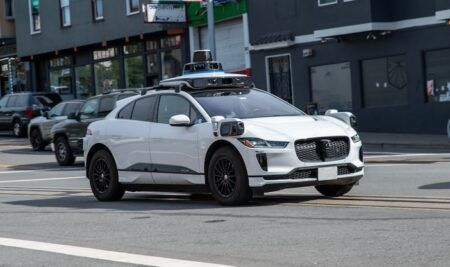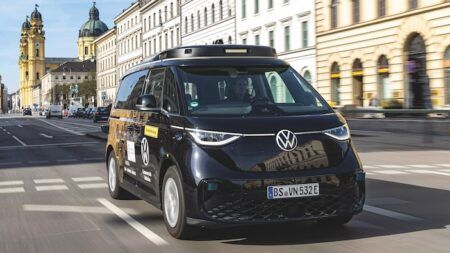Swedish company Einride has unveiled the prototype of its futuristic autonomous electric truck that it hopes will change the face of the freight transport industry.
Einride has created a technologically advanced and sustainable system that includes the ‘T-pod’, an electric, self-driving vehicle that can also be remotely controlled by ‘drivers’ at another location. In addition to the T-pod, Einride is developing a remote driving system, charging stations, and a pioneering infrastructure system, with plans to have an active fleet of 200 T-pods running in Sweden by 2020. Each pod is 23ft (7m) long and can hold 15 ‘standard’ pallets, up to a maximum 20 tonnes total weight when full. The pods will be able to travel 124 miles (200km) on a single charge, and Einride is currently developing compatible charging stations to power the vehicles.
There is no space in the T-pod for a human driver, so the vehicle does not need windows. The vehicle is designed to drive itself on highways, but transfers to remote control by a human driver when it moves onto city roads. Humans will be able to take control at any time should the situation require it. The T-pods will start running emissions-free between the cities of Gothenburg and Helsingborg in Sweden and the first active system will cover a capacity of 2,000,000 pallets per year the equivalent space of 400,000 passenger cars on the same route. Einride says it has already filled 60% of the 200 T-pods that will travel on the first scheduled service by 2020.
“We are transforming the existing transport chain from the ground up. The big companies behind long haul trucks keep building bigger trucks to increase efficiency, which ultimately means even more emissions,” explained Filip Lilja, Einride’s COO.
“We are changing that by creating a secure solution that is, not only cost effective, but dramatically minimizes the negative environmental impact of the transportation industry.”
Robert Falck, Einride’s CEO, added, “Our vision is to enhance the lives of all people through the delivery of a global, impact-positive, supply chain infrastructure. We don’t believe our work is done when we’ve achieved carbon neutrality. Our design process is driven by our goal to have a net positive impact, whether that’s improving the lives of transport workers or reducing road traffic accidents, every element of our system aims to have a measurable positive impact on the planet.”




